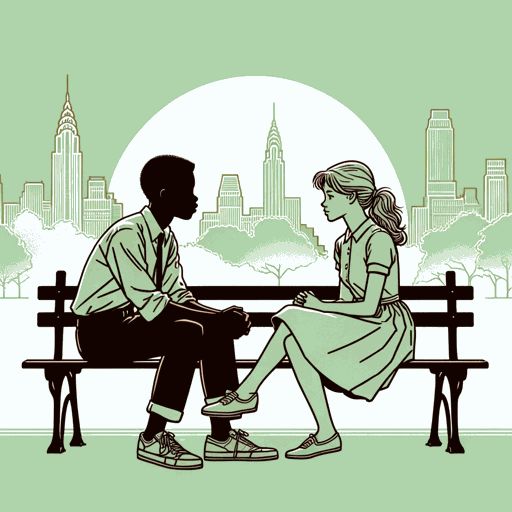55 pages • 1 hour read
Jacqueline WoodsonRed at the Bone
Fiction | Novel | Adult | Published in 2019A modern alternative to SparkNotes and CliffsNotes, SuperSummary offers high-quality Study Guides with detailed chapter summaries and analysis of major themes, characters, and more.
Themes
Societal Lines Drawn by Class and Education
One of the most important themes within the text is societal lines drawn by class and education. This is most plainly represented by Aubrey and Iris’s relationship, but it appears consistently throughout the narrative.
As the novel opens, the importance of class to the central characters is marked by Melody’s ceremony. In hosting it, her family reasserts her class status, further marked by the abundance of luxurious food and the hired orchestra. The affair screams elegance and wealth, but it also highlights how out of place Aubrey feels in this world. When Iris asks him to dance, he joke about how she is following a rulebook, and her subsequent annoyed reaction communicates years of microaggressions about their class difference being shared between them.
This difference is also highlighted by their relationship to food. Iris’s propensity for judgmental elitism appears when she can’t believe Aubrey, as a teen, only ever had margarine, and how she “couldn’t see a future with someone who only knew margarine” (41). This is not about Iris’s dislike of margarine itself, but an admission that the food people have access to conveys their economic status. Ultimately, Iris’s vision of her life involves higher education and an impressive career—a vision of affluence—and she leaves Aubrey out of that vision simply because they come from different backgrounds.
Related Titles
By Jacqueline Woodson
.webp&w=3840&q=75)
After Tupac and D Foster
Jacqueline Woodson

Another Brooklyn
Jacqueline Woodson

Before the Ever After
Jacqueline Woodson

Brown Girl Dreaming
Jacqueline Woodson

Harbor Me
Jacqueline Woodson

Hush
Jacqueline Woodson

If You Come Softly
Jacqueline Woodson

Locomotion
Jacqueline Woodson

Miracle's Boys
Jacqueline Woodson

The House You Pass on the Way
Jacqueline Woodson

